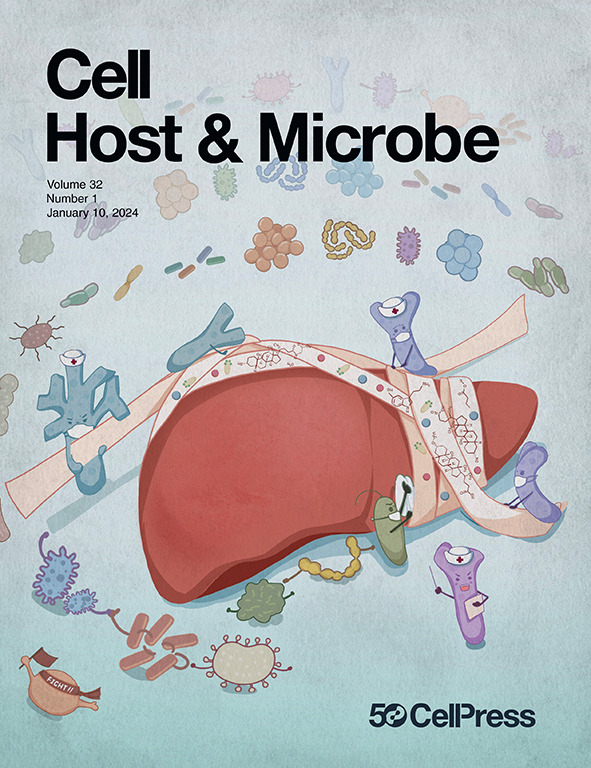如果你不能打败他们,那就加入他们吧:源自CRISPR相关基因的抗CRISPR蛋白
IF 20.6
1区 医学
Q1 MICROBIOLOGY
引用次数: 0
摘要
噬菌体已经进化出许多机制来躲避 CRISPR-Cas 防御系统的攻击。然而,人们对这些所谓 "抗 CRISPRs "的进化起源仍然知之甚少。在最近一期的《自然》杂志上,Katz 等人1 提供的证据表明,一些抗 CRISPRs 源自 CRISPR-Cas 系统本身的基因。本文章由计算机程序翻译,如有差异,请以英文原文为准。
If you can’t beat them, join them: Anti-CRISPR proteins derived from CRISPR-associated genes
Bacteriophages have evolved numerous mechanisms to evade targeting by CRISPR-Cas defense systems. However, the evolutionary origin of these so-called “anti-CRISPRs” remains poorly understood. In a recent issue of Nature, Katz et al.1 provide evidence that some anti-CRISPRs were derived from genes of the CRISPR-Cas systems themselves.
求助全文
通过发布文献求助,成功后即可免费获取论文全文。
去求助
来源期刊

Cell host & microbe
生物-微生物学
CiteScore
45.10
自引率
1.70%
发文量
201
审稿时长
4-8 weeks
期刊介绍:
Cell Host & Microbe is a scientific journal that was launched in March 2007. The journal aims to provide a platform for scientists to exchange ideas and concepts related to the study of microbes and their interaction with host organisms at a molecular, cellular, and immune level. It publishes novel findings on a wide range of microorganisms including bacteria, fungi, parasites, and viruses. The journal focuses on the interface between the microbe and its host, whether the host is a vertebrate, invertebrate, or plant, and whether the microbe is pathogenic, non-pathogenic, or commensal. The integrated study of microbes and their interactions with each other, their host, and the cellular environment they inhabit is a unifying theme of the journal. The published work in Cell Host & Microbe is expected to be of exceptional significance within its field and also of interest to researchers in other areas. In addition to primary research articles, the journal features expert analysis, commentary, and reviews on current topics of interest in the field.
 求助内容:
求助内容: 应助结果提醒方式:
应助结果提醒方式:


